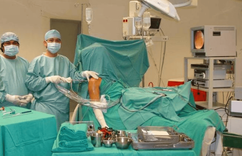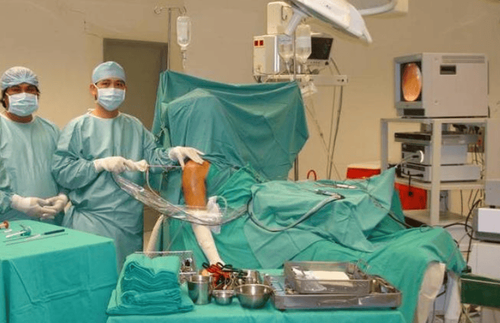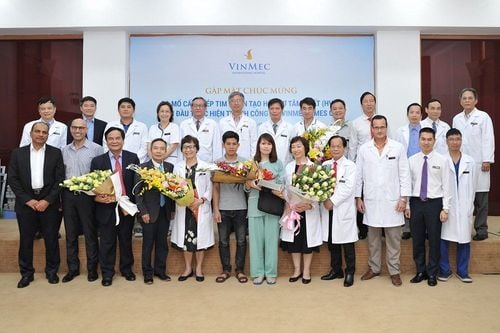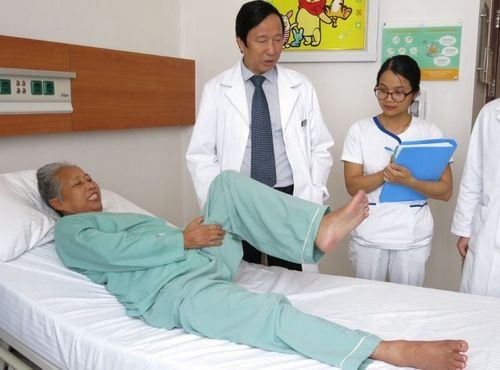At the beginning of February 2015, Mr. Nguyen Dinh T., 35, of Da Nang, underwent surgery for the second time to reconstruct the branch and bridge the motion. The surgery was performed by Dr. Nguyen Hoang Ha, Head of the Cardiovascular Surgery Department at Vinmec International General Hospital. implantation of a stent-graft encompassing the entire aortic arch and descending aorta, as well as cerebral vascularization.
The patient also underwent an aortic dissection by Dr. Ha in Da Nang around a year ago. During a routine clinic checkup, Mr. T.'s excessive blood pressure was unintentionally identified at the age of 27. He was given medicine to maintain his normal blood pressure. Though he believes that under the age of 30, high blood pressure should not be a concern, it is significant and can result in a stroke in the elderly. As a result, he focused more on his nutrition, exercise, and workout. But with regard to the medication, he initially drank the male and female meals before forgetting about it. He experienced a sharp searing sensation in his chest seven years later while operating a motorcycle. When the patient was transported to the hospital, the doctors made the following diagnoses: acute left iliac artery occlusion complications, renal artery ischemia, and type A dissection of the thoracic aorta. Right femoral artery and left femoral artery emergency surgery was performed on him, followed by surgery to repair the ascending aorta with selective cerebral perfusion arrest. Dr. Nguyen Hoang Ha of Vinmec International General Hospital and medical professionals from Da Nang General Hospital collaborated on the operation, which saved Mr. T. from a life-threatening condition.
After a doctor diagnoses high blood pressure and prescribes a course of therapy, the patient must adhere strictly to that regimen. Because uncontrolled hypertension will slowly cause damage to blood vessels, resulting in consequences from heart disease, kidney disease, and cerebrovascular accidents.
After some time has passed since the surgery, the aortic dissection has continued to enlarge and is now at risk of rupturing. The dissected portion of the vessel was still present in the aortic arch, and the descending aorta had a 5.8 cm aneurysm, according to the CT scan data. The likelihood of an abdominal aortic aneurysm increases with gradual bulging of the infrarenal abdominal aorta, which has many openings. Mr. T.'s blood pressure is also challenging to manage. He has taken three antihypertensive medications, however the upper thoracic aorta constriction keeps the maximal dose high.
He required a second surgery to fully treat the illness. Mr. T. made the decision to travel to Hanoi and have surgery at Vinmec International General Hospital after consulting with medical professionals in Da Nang. The second branching procedure was carried out by Dr. Nguyen Hoang Ha, who also used a stent-graft to connect all of the aortic arch's arteries that supply the brain and upper body (artificial vascular coated stent). descending aorta, inferior abdominal aorta, and the complete aortic arch. In order to stabilise the arterial wall and exclude the diseased part of the aorta, stent-grafts are metal supports that are wrapped in synthetic fibre membranes. As a result, it will support regulating the flow in the vascular lumen in accordance with the natural mechanism and aid in lowering the danger of pathological vascular rupture.
After the procedure, the patient received care to heal and was released two weeks later. Additionally, Mr. T's blood pressure has stabilized at 120/70 mmHg once more. The patient now only needs to take one type of medication instead of three, as was required before the intervention to maintain stability.
Aortic dissection is a true "tragedy" for the patient, according to Dr. Ha. because 48 hours after type A dissection, over 50% of patients pass away. Without prompt surgery, the chances of survival for the remainder are also quite slim. When a patient is diagnosed with an aortic dissection, they should be transported right away to a facility that can perform surgery. When an aortic dissection is discovered, the patient should be transported right away to a surgically equipped facility. This will prevent the patient from having to go through multiple hospitals, which adds time, expense, and further trauma to the operation. transfer. For instance, transferring from the district level directly to the central line is possible without going via the provincial or regional levels.
Usually, hypertension is discovered after the age of 40. But nowadays, people under the age of 30, like Mr. T, frequently do it. We must pay close attention to the fact that treatment must be adhered to after a diagnosis of high blood pressure. the doctor's prescribed course of treatment. because untreated hypertension can damage blood vessels and result in consequences like heart disease, renal disease, stroke, and even death. When young people reach working age and have a long lifespan, the effects of this subjectivity will be the worst.
Please dial HOTLINE for more information or register for an appointment HERE. Download MyVinmec app to make appointments faster and to manage your bookings easily.













